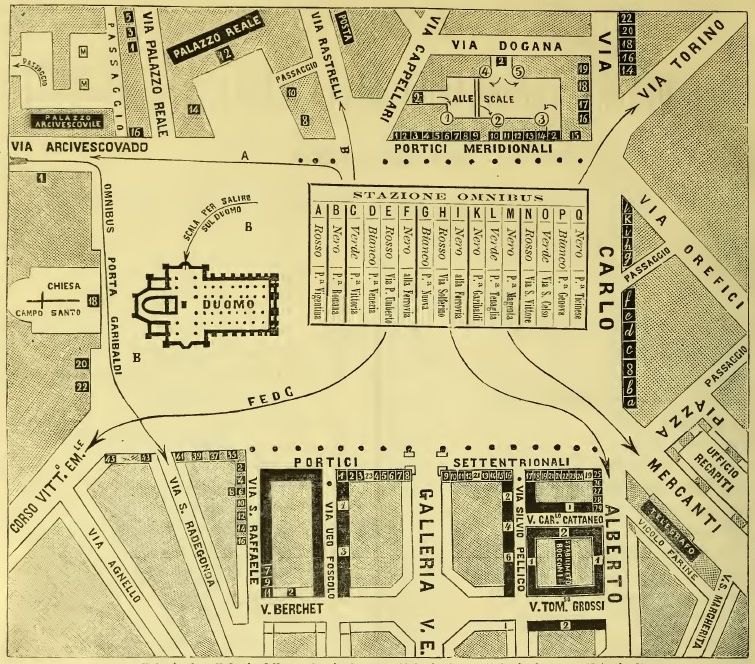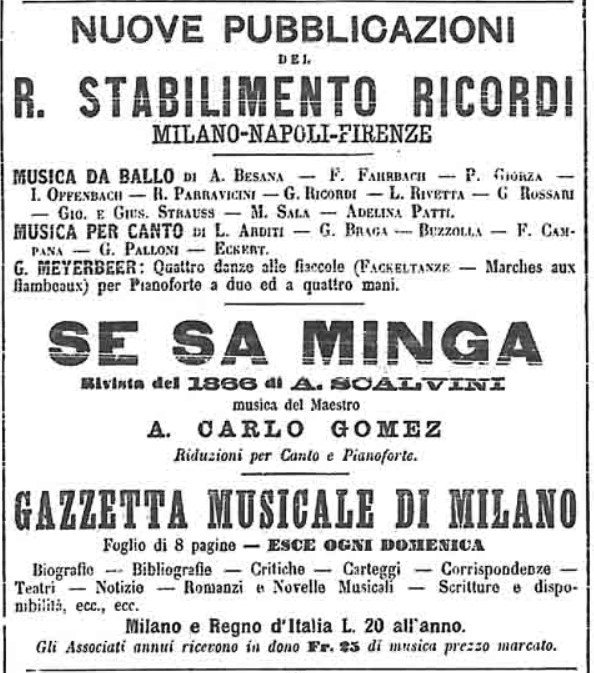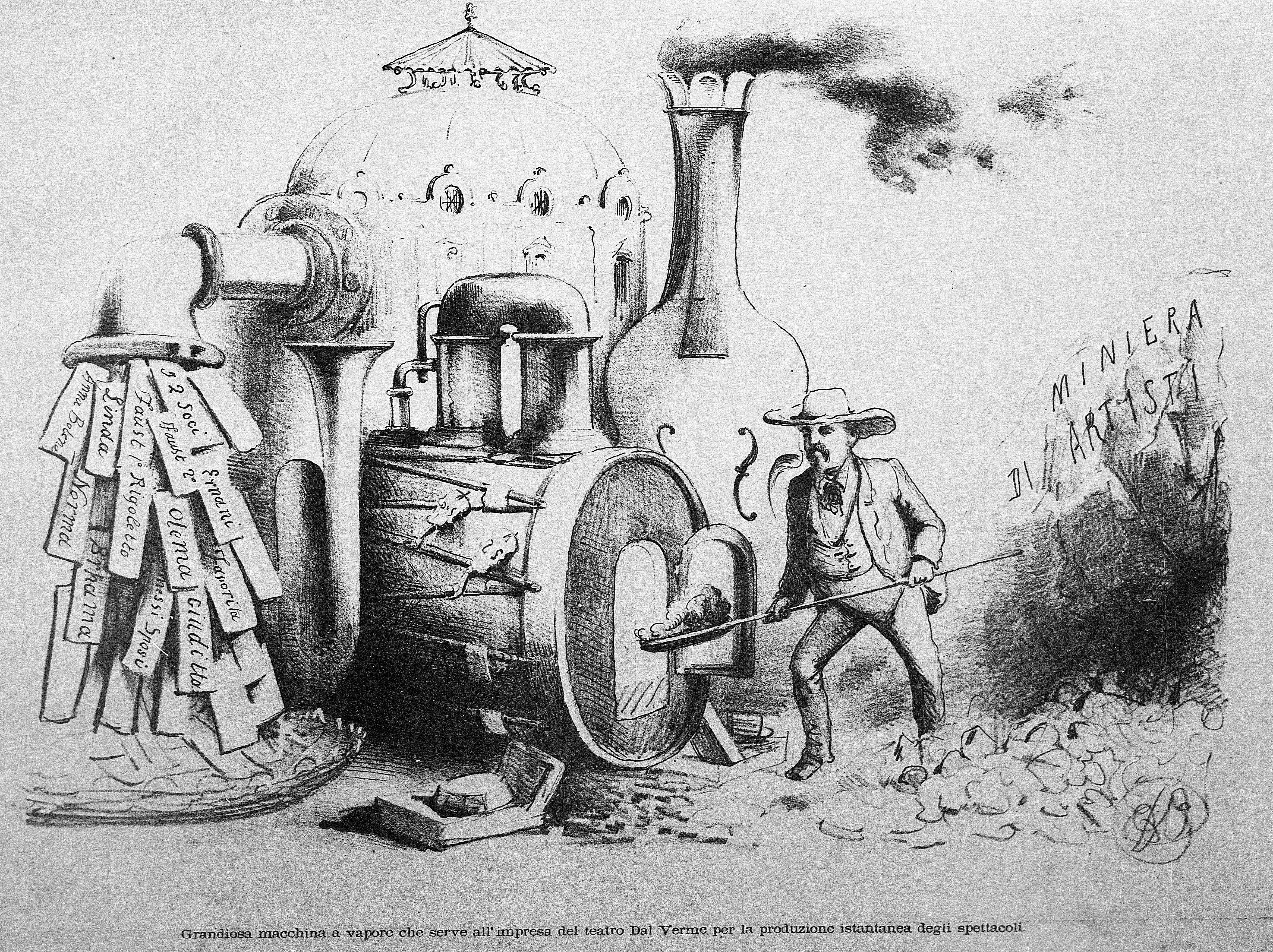
Between the Third Italian War of Independence (1866) and the establishment of the Triple Alliance (1882), Milan undertook a process of modernization and transformation of the public spaces (urban setting, public transport, electric lighting) and of its own identity (role of national and local politics, relationship with the other European cities, artistic experimentation).

After the Unification, Piazza del Duomo gradually expanded, thus becoming the beating heart of the city and of its urbanization. It became finally a suitable space to stage several events, instead of the seething crowd thronging the popular houses and taverns of the Rebecchino (demolished in 1875) and of the Coperto dei Figini (demolished in 1864). The new Galleria Vittorio Emanuele II was built according to the same logic: instead of the outlying Galleria de Cristoforis, a true passage in Parisian style, a bigger shopping and social artery led directly to Piazza del Duomo.
There was a lively network of omnibus, and electricity had a fascinating impact on the town: from the first public display in 1877 on the top of a tower built for the occasion in Piazza del Duomo, to the more regular lighting during the Universal Exposition in 1881, up to the lighting of the Foyer of Teatro alla Scala for the 1882 Carnival season.

The streets became wider and somehow forced the theatres and the other entertainment venues to come out and call out for attention. There was an explosion of posters, announcements, images to catch the eye of the citizens and tourists, flâneurs and bohemians, artistes and tramps. Music also exited from the concert halls, because music publishing contributed to an amateur consumption of music, heard in the streets by the passers-by. Advertisement of printed music increased more and more, and not only on the newspapers. Milan was the “moral capital” of the new united kingdom, but was also the capital of printers and publishers: this is true for music publications (the period under exam here refers to the great rivalry between Ricordi and Lucca) but also for the newspapers.

During the carnival and spring season, the entertainments’ guide listing the shows every day was full of events. Theatres such as Teatro alla Scala or Teatro Carcano tried to fulfil the expectations announced for the season, adding only a few new shows (new dances and northern music) to the mainstream repertoire. However, in a short time, a few other minor but very active theatres – Teatro Dal Verme, Teatro di Santa Radegonda, Teatro Re, Milanese, Fossati, ecc. – added to their programme new and unusual works, creating true fashions and igniting public debates.

Musical life in Milan developed beyond the institutional public theatres. The élite society in Milan usually met at the balls organised by a decadent aristocracy or by an ascendant middle class (especially of textile origin). Dances and intrigues of this urban society animated the parties and the masked balls organised by the theatres for the Carnival season. In Milan, the “Carnevalone” that for years had been suffering a lack of resources and had almost dissolved, usually brought music into the streets and brought to light all the minor musical activities that were starting up their institutional frame: the civic music schools, the music bands, the non-professional choirs founded in those years. The feasts – whether popular or not – would end at dawn, leaving the after-effects of inebriation along the Navigli.